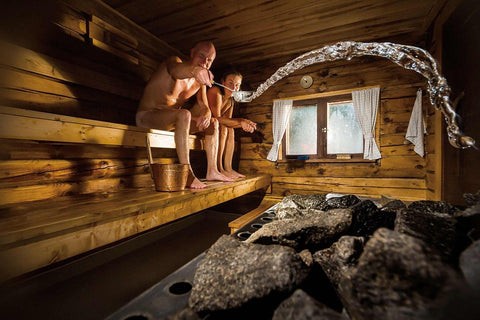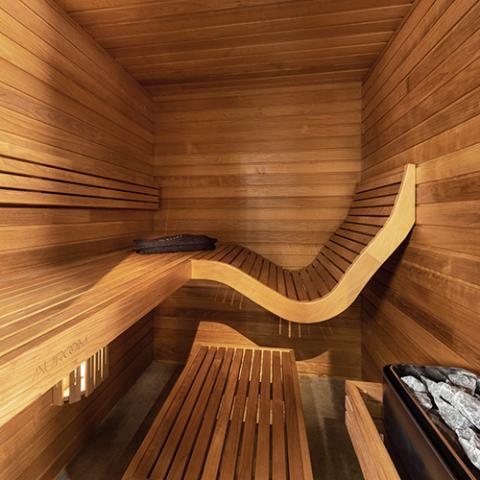Getting The Traditional Sauna To Work
Getting The Traditional Sauna To Work
Blog Article
6 Easy Facts About Traditional Sauna Described
Table of ContentsThe 15-Second Trick For Traditional SaunaUnknown Facts About Traditional SaunaSome Known Details About Traditional Sauna More About Traditional SaunaThe Basic Principles Of Traditional Sauna
A lot of the weight lost in a sauna is water loss and is re-gained upon rehydrating. However, undoubtedly sauna can be a fundamental part of a healthy weight management program. To look at the differences in between standard and IR saunas, I will divide these into proven, theoretical, and produced distinctions.Therefore, the best factor in the saunawhich goes to the ceiling directly above the sauna heateris normally in between 185 and 190 F. Claims that a traditional sauna goes beyond 200 F is just not true and not relevant for electric saunas marketed in the United States. The temperature for a far-infrared sauna is usually set in between 120 and 140 F; nevertheless, unlike the conventional sauna, the objective in and IR space is not to achieve a heat.
As a result of this, the temperature level distinction is practically unnecessary, since excessive sweating results in both sauna types, however the method of heating up the body is various. In an IR sauna the bather will certainly really feel warm and will certainly sweat profusely, however at much reduced temperatures (Traditional Sauna). Thus, if the objective is to invest longer time periods in the sauna, the IR sauna is a good option
When a conventional sauna has actually been properly heated up, the sauna walls are cozy, the air temperature has actually achieved established temperature and the rocks are very heated. As an intriguing side note, the heated wall surfaces and the rocks are discharging far-infrared warmth, combined with the heated air, to develop an "enveloping warmth".
Facts About Traditional Sauna Uncovered

When the high temperature is accomplished, the aspects cycle on and off to maintain the heat. The majority of typical sauna individuals appreciate putting water over the rocks to produce heavy steam to raise sauna humidity degrees. The advantages of pouring water over the rocks include: making the space much more comfy, moistening the nasal passages, and permitting the use of aromatherapy by mixing crucial oils with the water.

When the power goes into the body, it creates the body temperature level to raise and inevitably causes sweat. In an infrared sauna it's essential for the emitters/heaters to continue to be on nearly continuously. Since there is no mass of rocks to maintain warmth, the sauna will cool if the emitters turned off.
As stated above, the sauna bather in an infrared space wishes have a peek at this website to place himself in front of running emitters to get maximum take advantage of the warm. The home heating time for the 2 spaces can be very different, depending upon exactly how the rooms are utilized. For a standard sauna, a bather should permit 30-40 minutes for the space to attain a desired temperature level and to appropriately pre-heat the rocks.
The 2-Minute Rule for Traditional Sauna
A well built sauna will generally accomplish a temperature level of 150-160 F in about 30-40 mins. For hotter temperatures, the space may need to heat for a longer duration.

Standard saunas often tend to be bigger (hence use even more electricity) than infrared saunas, although traditional saunas are absolutely readily available in one and 2 person sizes. For a two-person standard sauna, 5x6 or 5x7 dimension is most popular. The leading bench can easily seat 2 or 3 people and is also long sufficient to rest during the sauna session.
About Traditional Sauna
The average expense per kWH of electrical energy in the U.S. is around $0.11, so a 4.5 kW heating system will cost roughly $.50 to compete one hour, if the heating system runs click for info constantly for one hour. Normally a sauna heating unit will compete 75% of the first hour and 50% of succeeding hours on because the aspects cycle once the established temperature is attained.

There is a hardly ever gone over distinction in the social experience in between the 2 spaces. While our culture has actually lost several of the social advantage of the conventional sauna experience, it can be really socially satisfying (Traditional Sauna). From household time in the sauna, to heart-felt discussions with considerable others, to sauna partiesthe typical sauna experience can lead to intimate mingling
Rumored Buzz on Traditional Sauna
Most higher end infrared rooms include colored light therapy, audio systems and full-glass fronts.
Report this page